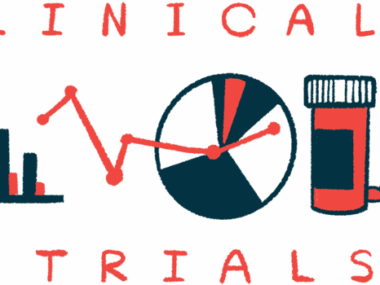Can BMB-105 ease insatiable hunger? PWS program to find out.
Trial will first test oral therapy's safety and effects in healthy volunteers
Written by |

Bright Minds Biosciences has launched a clinical program to evaluate whether its oral therapy candidate BMB-105 can ease hyperphagia, or insatiable hunger, and other behavioral symptoms in people with Prader-Willi syndrome (PWS).
The experimental therapy targets the underlying disease mechanisms of PWS, and as such, is a “novel” strategy for treating the genetic disorder, according to a company press release.
The program will include a placebo-controlled Phase 1 clinical trial to evaluate BMB-105’s safety and tolerability in healthy volunteers, as well as its pharmacological properties and “food effects.”
In parallel, Bright Minds is conducting the Phase 2a NOVA clinical trial, which is testing whether BMB-101, the company’s first-generation molecule with the same target as BMB-105, can treat hyperphagia and behavioral problems in adults with PWS. No details regarding trial locations were disclosed at this time, but the multicenter study will involve individuals ages 18-65. Enrollment is expected in Australia, with sites in Melbourne and Sydney.
“This proof-of-pharmacology clinical study is designed to evaluate BMB-101’s utility in addressing both hyperphagia and the behavioral/neuropsychiatric symptoms of PWS,” said Ian McDonald, CEO and cofounder of Bright Minds. “We believe it will pave the way forward for a pivotal study with BMB-105, our dedicated compound, and expedite the development of the drug that aims at directly targeting the [disease processes] of PWS.”
Pivotal, or registrational, trials are those designed to produce results that, if positive, will be used to support potential regulatory submissions for the therapy’s approval.
PWS is a complex condition marked by a wide range of symptoms, from hyperphagia and behavioral problems to cognitive difficulties and mental health challenges, as well as hormonal and sleep disturbances.
People with PWS produce lower levels of working 5-HT2C receptors, a cell surface protein in nerve cells that plays a role in regulating satiety and appetite, in addition to compulsive behaviors.
This 5-HT2C receptor deficiency is thought to lead to hyperphagia and behavioral problems, including aggression, anxiety, and compulsiveness.
Bright Minds aiming to help PWS patients regain control
Both BMB-101 and the second-generation therapy BMB-105 are designed to selectively activate 5-HT2C receptors, potentially allowing PWS patients to regain control over appetite and behavior.
“5-HT2C [activation] offers a novel mechanism for PWS by targeting the underlying aspects of the disease,” McDonald said.
In preclinical studies, BMB-101 has shown benefits across animal models of binge eating, aggression, cognitive impairment, hyperactivity, and compulsive behaviors.
A Phase 1 study (NCT05397041) that enrolled 64 healthy volunteers investigated the effects of single and multiple ascending doses of BMB-101, as well as the impact of food. The therapy, taken as an oral solution, was safe and well-tolerated at all doses, with no reports of serious adverse events.
BMB-101 also showed favorable pharmacological properties, while engagement with its target 5-HT2C receptors was confirmed using two different biomarkers.
These results led the company to launch a Phase 2a trial testing the therapy in people with developmental epilepsies, a severe group of epilepsy syndromes, and absence seizures, or brief, sudden lapses of consciousness.
Similar to the Phase 1 results, there have been no reports to date of serious adverse events with BMB-101 among these patient populations.
Program simultaneously testing another treatment called BMB-101
The new Phase 2a NOVA trial is designed to test BMB-101’s oral solution in 16 adults with PWS, ages 18-65. After a four-week screening period to assess hyperphagia and behavioral symptoms, the participants will be randomly assigned to receive either BMB-101 or a placebo.
Treatment comprises a four-week dose-titration phase to reach the maximum tolerated dose, followed by an eight-week maintenance phase — about three months altogether. Thereafter, at the investigator’s discretion, participant may be able to choose to enter an open-label extension study to continue or start with BMB-101 for a longer period.
NOVA’s goals are to evaluate the effect of BMB-101 on hyperphagia-related behaviors and other PWS-related behavioral symptoms, as well as to continue to assess the therapy’s safety and tolerability.
We believe that our 5-HT2C selective [activators] provide a unique approach with the potential to deliver a novel and effective treatment option that PWS patients and their families desperately need.
In a webcast announcing the program, McDonald said that the Phase 2a trial “allows us to generate early clinical insights within the PWS population, including receptor engagement, metabolic, and behavioral endpoints, as well as overall tolerability, well in advance of BMB-105’s pivotal program.”
This will advance the program more rapidly, McDonald said.
“By leveraging BMB-101’s established safety, [pharmacological] profile, and central target engagement, we can effectively save a year of development time, while also derisking and informing the design of future BMB-105 studies,” McDonald said.
In the press release, McDonald added: “We believe that our 5-HT2C selective [activators] provide a unique approach with the potential to deliver a novel and effective treatment option that PWS patients and their families desperately need.”







